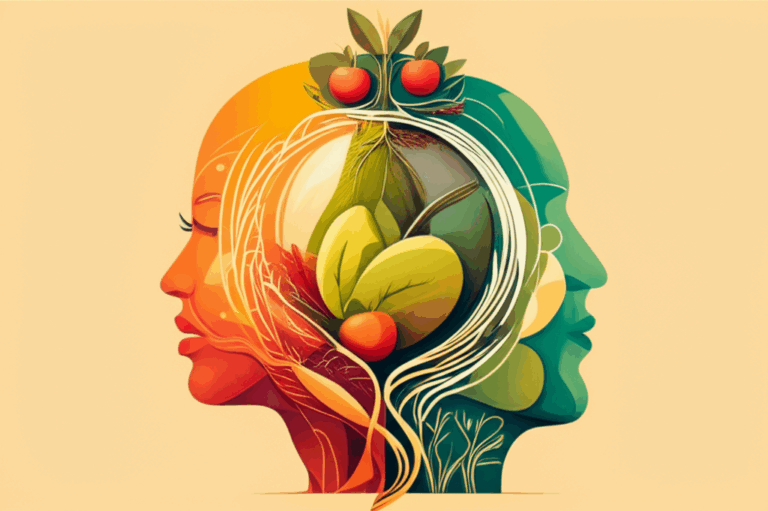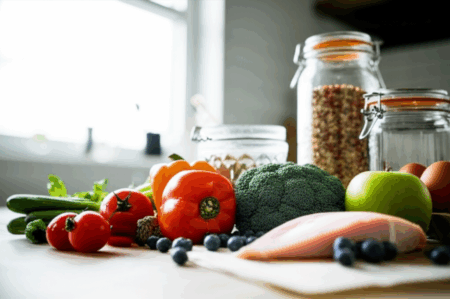As we journey through life, our bodies undergo various changes, and so do our nutritional needs. Making informed food choices becomes increasingly important to maintain health, energy levels, and overall well-being as we age. This article provides five essential tips to guide you toward healthier eating habits, ensuring you get the most out of your diet during your golden years.
1. Embrace Nutrient-Dense Foods
As you age, your body requires fewer calories but still needs a similar, if not greater, amount of nutrients. Therefore, focusing on nutrient-dense foods is crucial. These foods pack a high amount of vitamins, minerals, and other beneficial compounds with relatively few calories.
- Fruits and Vegetables: Aim for a colorful variety, including dark leafy greens, berries, and orange and red produce. They are rich in vitamins, minerals, antioxidants, and fiber.
- Whole Grains: Choose whole grains like brown rice, quinoa, oats, and whole-wheat pasta over refined grains. They provide fiber, B-vitamins, and essential minerals.
- Lean Protein: Incorporate lean sources of protein such as fish, poultry, beans, lentils, eggs, nuts, and seeds. Protein is essential for maintaining muscle mass, immune function, and overall cellular repair.
- Low-Fat Dairy: Opt for low-fat or fat-free milk, yogurt, and cheese or fortified soy alternatives to ensure adequate calcium and vitamin D intake.
- Healthy Fats: Include sources of unsaturated fats like avocados, nuts, seeds, olive oil, and fatty fish in your diet. These fats support heart health and overall well-being.
2. Prioritize Protein Intake
Protein plays a vital role in maintaining muscle mass, which tends to decline with age. Adequate protein intake helps prevent muscle loss, frailty, and a higher risk of falls.
- Recommended Intake: Aim for a minimum of 1.0-1.2 grams of protein per kilogram of body weight daily. This requirement may increase to 1.2-1.5 grams per kilogram during acute or chronic illness.
- Protein Sources:
- Seafood: Eat fish or shellfish instead of meat a couple of times a week. Fatty fish like salmon, mackerel, and tuna are also rich in omega-3 fatty acids, which are good for your brain.
- Dairy: Drink low-fat (1%) or fat-free (skim) milk with meals and add low-fat yogurt and cheeses to your eating routine.
- Soy: Drink unsweetened fortified soy beverages (soy milk) and add tofu to stir-fries, soups, and stews.
- Beans, Peas, and Lentils: Use black beans, red lentils, or chickpeas in place of meat in your favorite recipes.
- Lean Meats: Choose lean cuts of meat and poultry without skin.
3. Stay Hydrated
As we age, our sense of thirst may decline, making it essential to consciously drink enough fluids throughout the day. Proper hydration is crucial for digestion, nutrient absorption, and overall bodily functions.
- Daily Intake: Aim for at least eight cups of fluids per day, and more in warmer weather or when exercising.
- Beverage Choices:
- Water: Water is the best choice for hydration.
- Low-Fat Milk: Low-fat or fat-free milk, including lactose-free options or fortified soy beverages, can also help you stay hydrated.
- Unsweetened Juices: 100% fruit juice can be a part of your fluid intake, but limit it due to its sugar content.
- Herbal Teas: Unsweetened herbal teas can contribute to your daily fluid intake.
- Tips for Staying Hydrated:
- Drink throughout the day, even if you don’t feel thirsty.
- Have a beverage with each meal and snack.
- Carry a water bottle with you and refill it regularly.
- Eat hydrating foods like fruits and vegetables with high water content.
4. Limit Sodium, Added Sugars, and Saturated Fats
Reducing the intake of sodium, added sugars, and saturated fats can significantly improve your health as you age.
- Sodium:
- Why Limit It: High sodium intake can lead to high blood pressure and increase the risk of heart disease.
- How to Reduce It:
- Limit processed and packaged foods, which are often high in sodium.
- Read Nutrition Facts labels to choose products with lower sodium content.
- Use herbs, spices, and citrus juices to flavor your food instead of salt.
- Avoid adding salt to your meals.
- Added Sugars:
- Why Limit Them: High sugar intake can contribute to weight gain, type 2 diabetes, and other health problems.
- How to Reduce Them:
- Avoid sugary drinks like sodas, sweetened juices, and energy drinks.
- Limit sweet treats like cakes, cookies, and candy.
- Choose whole fruits over fruit juices.
- Read labels and choose products with less added sugar.
- Saturated Fats:
- Why Limit Them: High saturated fat intake can raise cholesterol levels and increase the risk of heart disease.
- How to Reduce Them:
- Choose lean meats and poultry without skin.
- Opt for low-fat or fat-free dairy products.
- Use healthy oils like olive oil and avocado oil instead of butter and lard.
- Limit processed foods and baked goods high in saturated fats.
5. Make Eating a Social Event
Eating with others can make meals more enjoyable and help you stick to a healthy eating plan. Social interaction during meals can also stimulate your mind and improve your overall well-being.
- Tips for Social Eating:
- Invite Friends and Family: Enjoy meals with friends or family members as often as possible.
- Join Community Programs: Look into having meals at a nearby senior center, community center, or religious facility.
- Potlucks: Organize potluck meals where everyone brings a dish to share.
- Cooking Together: Invite a friend to cook with you and share the meal.
- Shop Together: Shopping with a friend can give you a chance to catch up without falling behind on your chores. It’s also a great way to share new meal ideas and save money on discount deals like “buy one, get the second half price”.
Key Nutrients for Older Adults
Focusing on specific nutrients is essential to address common deficiencies in older adults.
- Calcium and Vitamin D: Critical for bone health, these nutrients help prevent osteoporosis and fractures. Include vitamin D-rich foods like fatty fish, fortified dairy products, and egg yolks. Adults over 65 should aim for 800-1000 IU of vitamin D and 1,200 mg of calcium daily.
- Vitamin B12: Essential for nerve function and red blood cell formation. As absorption decreases with age, consider fortified cereals, lean meats, and eggs. A healthcare provider may recommend B12 supplements.
- Potassium: Helps regulate blood pressure and supports kidney function. Good sources include bananas, sweet potatoes, spinach, and beans.
- Fiber: Promotes digestive health and helps prevent constipation. Choose whole grains, fruits, vegetables, and legumes. Women over 51 should aim for 21 grams of fiber daily, while men should consume 30 grams.
- Iron: Prevents anemia and supports immune function. Include lean meats, dark leafy greens, beans, and fortified cereals. Pair with vitamin C-rich foods to enhance absorption.
- Magnesium: Plays a role in glucose and blood pressure regulation. Found in dark leafy greens, nuts, seeds, and whole grains.
Addressing Eating Challenges
Sometimes health issues or other problems can make it hard to eat healthy. Here are some tips that might help:
- Trouble Chewing: See your dentist to check for problems.
- Trouble Swallowing: Try drinking plenty of liquids with your meal. If that does not help, check with your health care provider.
- Loss of Appetite: Try natural flavor enhancers such as olive oil, butter, vinegar, garlic, onions, ginger, and spices to boost your appetite. Eating small, frequent meals throughout the day can also make it easier to eat more with a low appetite.
- Difficulty Tasting and Smelling Food: Try adding color and texture to make your food more interesting.
Conclusion
Making healthier food choices as you age involves focusing on nutrient-dense foods, prioritizing protein and hydration, limiting sodium, added sugars, and saturated fats, and making eating a social event. By following these tips and addressing any eating challenges, you can maintain your health, energy levels, and overall well-being during your golden years. Remember to consult with your healthcare provider or a registered dietitian for personalized advice tailored to your specific needs and health conditions.







